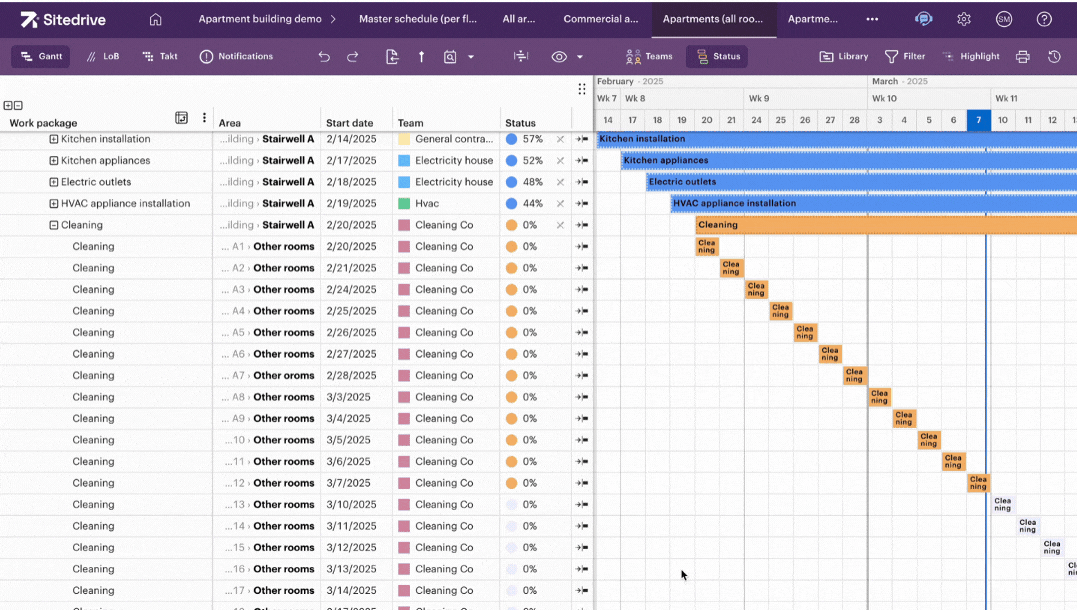Gantt or Location-Based Scheduling – How to combine your main scheduling methods and optimise your construction projects?
.png)
Gantt charts and location-based scheduling both play crucial roles in construction project management. But which one should you use?
Gantt is ideal for high-level planning, while location-based scheduling helps optimise workflows on-site.
In reality, it’s not about choosing one over the other – both are essential for different aspects of the project.
In this guide, we’ll show you how to combine them and flexibly use both methods within the same project. We’ll also demonstrate how to do this with Sitedrive.
Here’s what we’ll explain:
- Why Gantt alone isn’t enough in your construction projects?
- How to combine Gantt and Location-based scheduling?
- How to do Site Management using Gantt and Location-based scheduling?
- Comparison chart: Which one to use when?
Why Gantt chart alone isn’t enough for your construction project?
Gantt charts – as much as we love them – don’t always tell the whole story of what’s happening on-site. They don’t reveal how efficiently space is being used or where potential bottlenecks might occur. This can lead to scheduling conflicts and delays.
Location-based scheduling, on the other hand, adds more dimension by focusing on specific areas within the building. It helps optimise the use of space and resources, making it easier to spot and address inefficiencies and problems, like safety concerns. By structuring the schedule around locations, it becomes clearer who needs to be where and when reducing clashes and keeping the project moving smoothly.
That’s why you should use both. Gantt gives you the big picture, while location-based scheduling ensures everything runs efficiently on-site.
How to combine Gantt and Location-based scheduling in Sitedrive
Using Sitedrive, you can combine Gantt and location-based scheduling (or, in its most advanced form, Takt scheduling) to get the best of both worlds.
Here are three practical ways to do it. 👇
Example 1: Recurring work sequences in Takt view
- Start by using Gantt to define work phases on a general level.
- Then, switch to Takt view to create work sequences.
This works best for work phases where the same work sequence repeats in many locations, e.g., the interior phase in apartment buildings.
You can also standardise your scheduling by saving your work sequences to the Library, both in Gantt and Takt view, and reuse them in future projects.

Using Takt view will visualize your schedule and simplify it so that you can identify waste and empty spaces. This allows you to prevent work overlaps, reduce waiting times for crews on-site, and simplify scheduling.
Example 2: Copying work sequences in Takt view
If you feel more comfortable using Gantt charts, you can lean into it more.
- Use Gantt for listing and scheduling work packages.
- Use Takt view to copy and apply the work packages to other areas.
- Then use the Takt mode for daily management and for reviewing and refining your schedule.
Using Takt view alongside Gantt saves you time and ensures consistency across locations.

Example 3: Quantity-based scheduling
If you use quantity-based scheduling on Sitedrive, you can
- Create the schedule and the work packages on Gantt based on quantities.
- Use Takt view for daily management and monitoring progress.
Here, the Takt view helps you track work at a granular level.

Using Gantt and Takt for Site Management
Weekly planning and meetings
- Use Gantt in weekly meetings to monitor the overall progress, see what the next week will look like, and plan for possible changes. In this view, you can select and modify multiple work packages simultaneously.

Weekly planning can also include a lot of supporting one-off tasks that are often not added to the schedule but are still happening on-site. By making these tasks visible on the schedule, we can clearly see where and when these tasks should be carried out to avoid possible blockages.
- Add a sum work package for these one-off tasks in the Gantt hierarchy, and then add the work packages to the correct locations in Takt.
Daily management
- Use Takt view to see what happens on-site in real time.
Takt works great for daily management where you go through what is going to happen during the day. You can easily visualize what is going to be done and where on the site.
This helps you improve safety planning and material deliveries as location-based scheduling allows everyone to see where specific activities are taking place, and potential hazards can be more easily identified and mitigated.

Contractor meetings
Contractor meetings can benefit from both Gantt and Takt modes.
- Use Gantt for monitoring progress.
- And Takt to make bottlenecks visible.

Conclusion: Gantt vs. Takt – Which one should you choose?
In short: both.
Both methods are useful for site planning and management.
Use Gantt for
✅ The big picture: Start with Gantt to outline the overall project phases and timelines.
✅ Tracking: Use Gantt for weekly planning, progress monitoring, and making changes to multiple tasks at once.
✅ Adding work phases.
✅ Contractor meetings to monitor progress.
Use Location-based scheduling / Takt for
✅ The details: After you have created the big picture with Gantt, use Takt to break down project phases into specific work sequences and locations.
✅ Recurring tasks: If a work sequence repeats in multiple locations (e.g., an apartment in an apartment building), define it once in Takt and then replicate it. This saves time and ensures consistency.
✅ Refining Gantt schedules: If you prefer to initially create your schedule in Gantt, use Takt to review, refine, and optimize it for specific areas.
✅ Visualizing: Use Takt view for daily management and visualizing workflows.
✅ Monitoring progress in specific locations.
✅ Adding work packages for work phases.
✅ Contractor meetings to highlight potential bottlenecks.

Leverage Sitedrive to combine Gantt, Takt, and Line of Balance
Optimise efficiency with Sitedrive – you’ll always have one production schedule where you can use different scheduling methods for different purposes.
Want to see how Sitedrive can improve your daily life?

Book a demo of Sitedrive
We'll show you how Sitedrive helps you combine different scheduling methods in your project.



